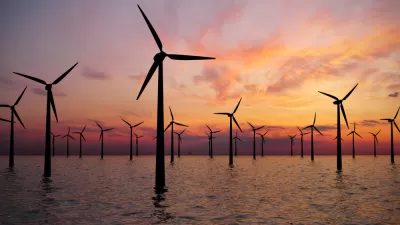Reese Neader and Daniel Goldfarb discuss military-driven innovation in technology, and how it will ease our transition away from dependence on foreign oil.
The American appetite for energy is no trifling matter. As Neader and Goldfarb point out, the United States spent $7.3 trillion to patrol the Persian Gulf between 1976 and 2007, in an effort to protect the oil supply chain – that's equivalent to a new Wall Street bailout every three years. The soaring price of oil strains military operations as much as it does consumers at home, meaning the military's traditional role as a technological innovator is as relevant as ever to the growth and security of the domestic economy.
"Over the past decades, the U.S. military has been a central driver of commercial innovation. When our armed forces needed to enhance their speed of communication in the face of a nuclear assault, we got the Internet. When they needed to increase their ability to process information, we got the microprocessor. Today, our military is facing an energy crisis that requires new breakthroughs in technology."
The Department of Defense is meeting this crisis by leading the charge in small-scale, localized energy production. "A focus on distributed generation, renewable energy, and American-made technologies is becoming increasingly ingrained in our military's decision-making, and needs to take a larger role," argue Neader and Goldfarb.
They caution that the military can't drive market demand alone. While it is the single largest consumer of liquid fuel across the globe, it still only accounts for 2 percent of total American energy consumption.
"Distributed power is about increasing prosperity at home and keeping our soldiers safe abroad."
FULL STORY: Big Idea: A Green Energy Offensive From the Department of Defense

Planetizen Federal Action Tracker
A weekly monitor of how Trump’s orders and actions are impacting planners and planning in America.

Map: Where Senate Republicans Want to Sell Your Public Lands
For public land advocates, the Senate Republicans’ proposal to sell millions of acres of public land in the West is “the biggest fight of their careers.”

Restaurant Patios Were a Pandemic Win — Why Were They so Hard to Keep?
Social distancing requirements and changes in travel patterns prompted cities to pilot new uses for street and sidewalk space. Then it got complicated.

Platform Pilsner: Vancouver Transit Agency Releases... a Beer?
TransLink will receive a portion of every sale of the four-pack.

Toronto Weighs Cheaper Transit, Parking Hikes for Major Events
Special event rates would take effect during large festivals, sports games and concerts to ‘discourage driving, manage congestion and free up space for transit.”

Berlin to Consider Car-Free Zone Larger Than Manhattan
The area bound by the 22-mile Ringbahn would still allow 12 uses of a private automobile per year per person, and several other exemptions.
Urban Design for Planners 1: Software Tools
This six-course series explores essential urban design concepts using open source software and equips planners with the tools they need to participate fully in the urban design process.
Planning for Universal Design
Learn the tools for implementing Universal Design in planning regulations.
Heyer Gruel & Associates PA
JM Goldson LLC
Custer County Colorado
City of Camden Redevelopment Agency
City of Astoria
Transportation Research & Education Center (TREC) at Portland State University
Camden Redevelopment Agency
City of Claremont
Municipality of Princeton (NJ)





























